You will need:
- Three different coloured Skittles
- One sugar cube, or a teaspoon of sugar
- Clear water
- One flat, shallow white plate.
- A mess bucket and cleaning materials

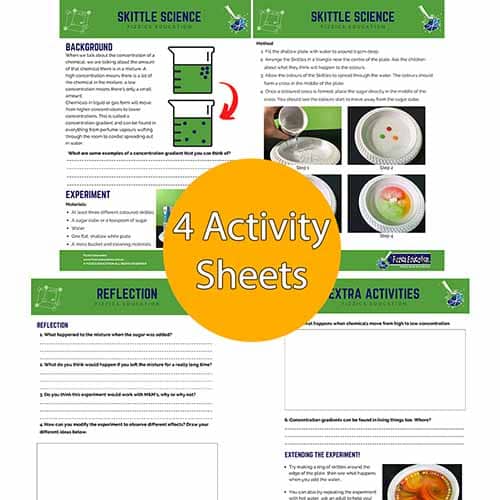
Go further – buy 4 x student activity sheets as extension worksheets.
This student science booklet has been created by experienced science educators from the Fizzics Education team.
Use these student worksheets as blackline masters for your science class!
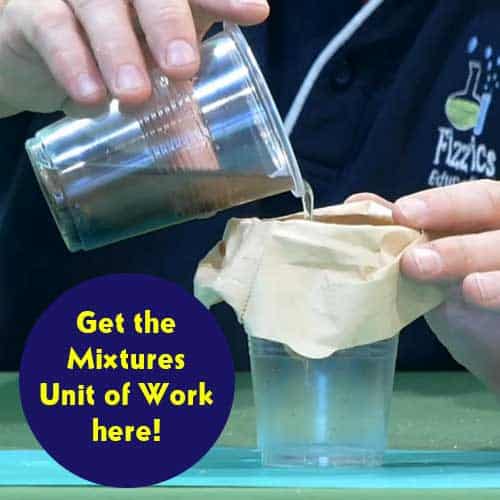
Get the Unit of Work on Mixtures here!
- How can we separate mixtures?
- What are the different techniques?
- From chromatography to magnetism, join us to explore the variety of ways we can separate mixtures!
Includes cross-curricular teaching ideas, student quizzes, a sample marking rubric, scope & sequences & more
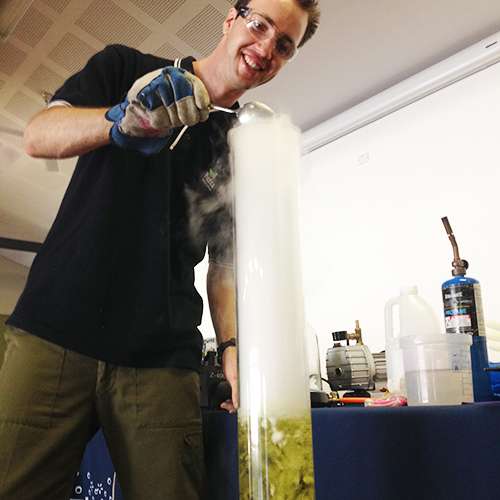
School science visits since 2004!
– Curriculum-linked & award-winning incursions.
– Over 40 primary & high school programs to choose from.
– Designed by experienced educators.
– Over 2 million students reached.
– Face to face incursions & online programs available.
– Early learning centre visits too!
Why Does This Happen?
This science experiment covers a fundamental part of chemistry – chemicals move from higher concentrations to lower concentrations. This is called a concentration gradient and can be found in everything from perfume vapours wafting through the room to cordial spreading out in water.
When you first add the skittle they start to dissolve in the water, sending the food colours outwards as this happens. The reason that the food colours meet in the middle of the plate as a cross and do not mix is that each food colour has the same amount of sugar dissolved from each skittle. Once you add the pure sugar into the centre of the food colour cross, the sugar cube beings to dissolve as well. This creates a situation where the most amount of sugar is found in the centre of the plate whereas the least amount of sugar is found at the edge of the plate (this area is basically pure water). As the sugar dissolved it pushed outwards into the rest of the solution, sending the coloured water outwards as well.
As a teacher, there are a number of opportunities to ask kids for their predictions and answers. They could try changing the variables to see if there is any different effect (eg, hot water vs cold water or different coloured skittles or different sugar types). They could try using M & Ms as well but the chocolate colour does get in way of the experiment.
Classroom activity sheets for this experiment
Create, reflect & extend!
Also, try adding hot water to a ring of skittles around the edge of the plate!
leads to…
Recording from a Facebook Live presentation on Skittle Science
Want to join the fun? Join our Facebook site and keep an eye out for the next live science event where you can work with our science presenters who run the experiments with you!
Variables to test
- Try this with M & Ms or other types of candy
- What happens if your eater had dissolved sugar in it already?
From colour changes to slimy science, we’ve got your kitchen chemistry covered!
Get in touch with FizzicsEd to find out how we can work with your class.
Chemistry Show
Years 3 to 6
Maximum 60 students
Science Show (NSW & VIC)
60 minutes
Online Class Available
STEM Full Day Accelerator - Primary
Designed from real classroom experiences, this modular day helps you create consistently effective science learning that directly address the new curriculum with easily accessible and cost-effective materials.



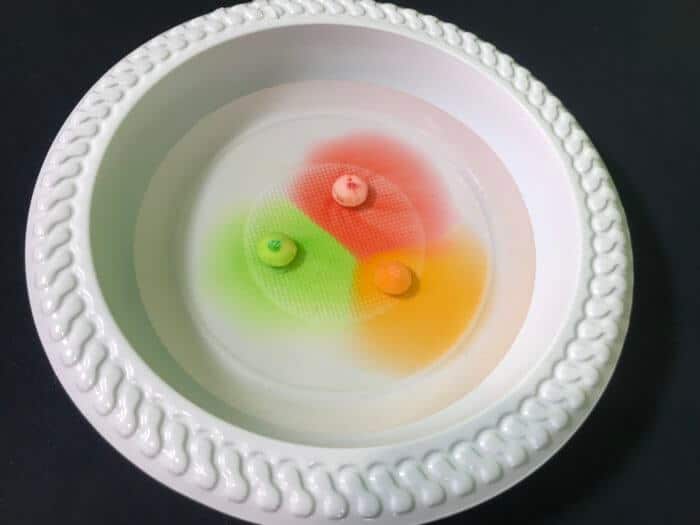
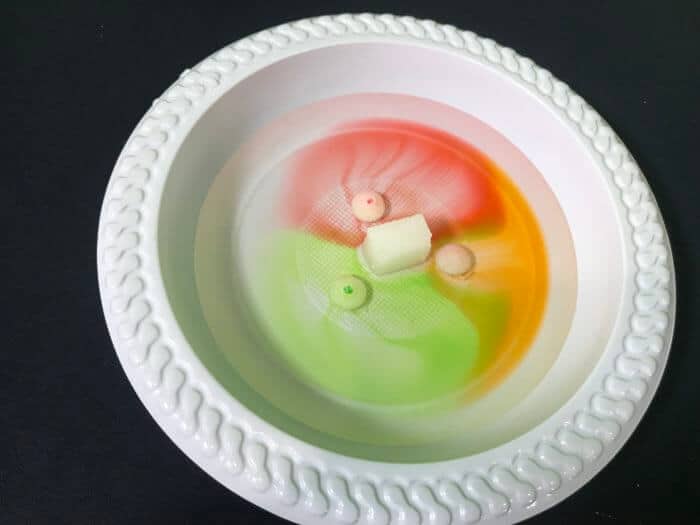


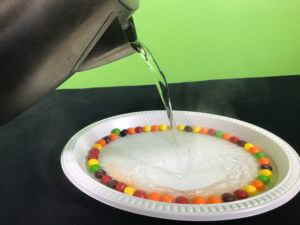


























Hi,
What is the purpose of this experiment?
Hi Desiree!
This experiment is all about concentration gradients. This is the idea that liquids and gases will move from high concentration towards low concentration. In this case, the skittles dissolved and the sugar and the food colour from the skittles went into the water. Once we added pure sugar in the middle of the plate, the dissolving sugar pushed outwards into the low sugar concentration at the edge of the plate… in doing so pushing the food colours from the sugar outwards. Concentration gradients are important in chemistry to understand how chemicals behave in reactions. When we did this with hot water the same effect occurred, however, it was much faster, which shows that reactions occur much more quickly when there is more heat energy available. Hope you have fun with the activity!
I think there is something else happening here in this experiment that is needed to explain why the colours don’t mix and it is to do with dissolving.
If you look carefully at the coloured mixtures being pushed from the sweets, it appears as though they are fine particles of colour sitting on the bottom. I.e. they have not dissolved. They are a fine suspension perhaps of coloured particles. Because they are is suspension they do move from high to low concentration but when they meet I wonder if they meet a physical barrier which impedes their movement i.e. a load of suspended particles.
cool experiment
Thanks Julie, we love this one!
What is the thesis statement of this experiment. We love this.
Thanks for your comment! In essence, this experiment shows that chemicals tend to move from where there is more to where there is less (also known as a concentration gradient). Glad you enjoyed the experiment!
Is this a chemical change or a physical change?
Thanks
Hi Paige! This one is a physical change as it is about dissolving a solid into a liquid. In order for a chemical change to have occurred, you need to have a new molecule formed that wasn’t there before.
What would the particles moving towards the center of the plate have been
Hi Kacey!
At first, the skittles outer covering dissolves. This brings sugar and food colouring molecules towards the centre of the plate. When you add the extra sugar in the centre of the plate, you will have noticed that water in the plate rushes into the additional sugar as it dissolves.
How would you say the observations of the experiment is like?
I am going to enjoy doing this science experiment, i actually want to be a biology scientist.